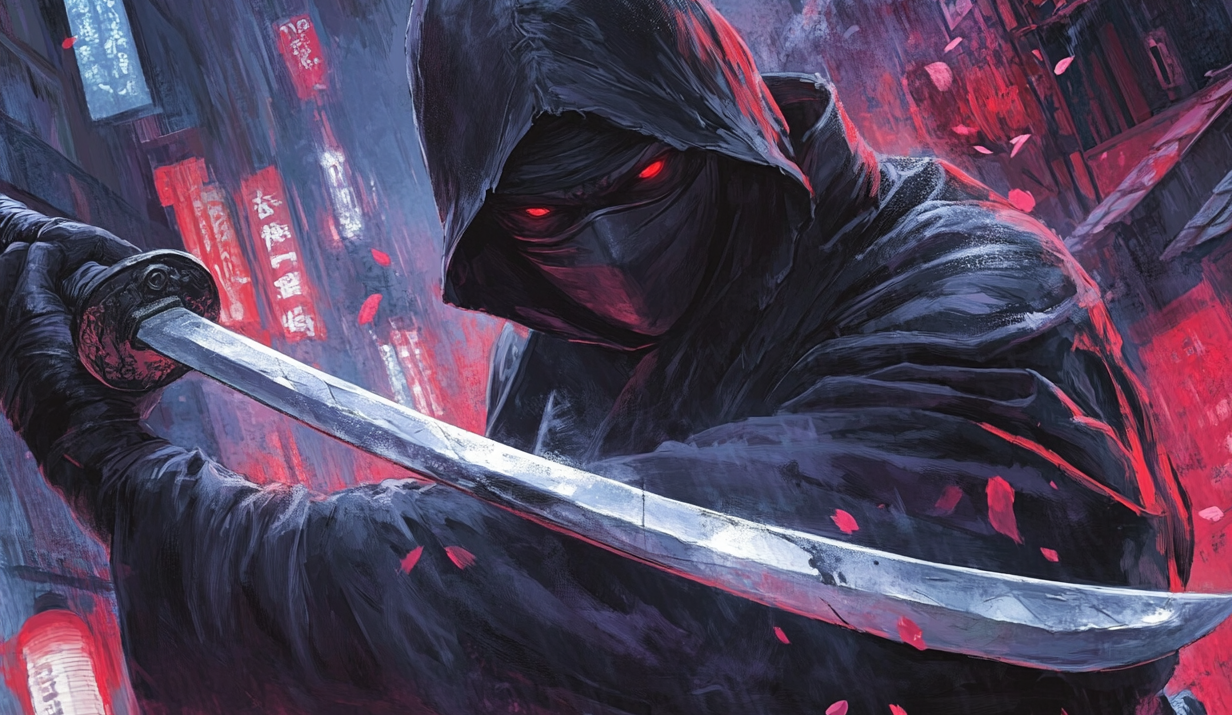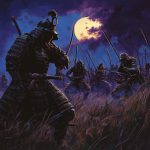The allure of ninjas has captured the public imagination for many years. And while the public perception presents ninjas as black-clad warriors with almost superhuman abilities in terms of stealth, secrecy, and command of weapons, the truth is the ninja villages in Japan spawned more that just warriors. The true history of ninja villages points to a more complex and intricate dynamic.
Origins of the Ninja
The ninjas emerged during the feudal era of Japan which began around the 15th century. They came from a time of great upheaval and seemingly endless warfare. Their most prominent time was during the Sengoku Jidai, known today as the Warring States period.
During this time, Japan was divided into several regions that were controlled by daimyos or warlords. And while the daimyo employed samurai as guards and warriors, the ninjas were less formalized and focused on espionage which required unconventional means to achieve their goals.
The focus of ninjas were espionage, assassination, and sabotage. Such abilities required the teaching of specific skillsets that were mostly performed in two villages, Iga and Koga, which were known as ninja villages.
Iga and Koga
The two most famous regions that are associated with ninjas are the Iga Province, which is in the Mie Prefecture, and Koga, which is now part of the Shiga Prefecture. What made both villages ideal was the remote location that featured rugged terrain and easily defendable fortifications. The isolation created the perfect environment to train prospective ninjas.
While there were other ninja villages, Iga and Koga stood apart because of their unique social structure. As most of Japan was run by daimyos, these two villages were so isolated that they had their own autonomy. The villages and surrounding communities had created a collective governance where various clans shared power and collaborated in mutual defense efforts.
When combined with the desire of many daimyos to have the services of ninjas, Iga and Koga remained independent for some time. Plus, the unique conditions created the perfect environment for training in the ninja way.
Typical Training of the Japanese Ninja
The training found in the ninja villages of Japan focused on building both mental and physical prowess. Skills were passed down through the generations within the clans that taught ninjas, often under strict rules of secrecy.
The typical curriculum for prospective ninjas included stealth, survival, the use of specialized tools and weapons, and combat techniques. The unique weapons of ninjas included smoke bombs, kunai or daggers, and most famously, the shuriken or throwing stars.
While physical training was important, it was really the focus on mental training that made the ninjas stand apart from the samurai. From what has been learned in the history of ninja villages, the main mental skills taught were intelligence-gathering and espionage techniques. In addition, the ability to decode and read messages, use disguises, and travel through enemy territory while remaining unnoticed.
The ninjas were trained to blend into the societies that they infiltrated. Allowing them to become part of the surroundings so they could carry out their mission without drawing attention to themselves.
The Golden Age of the Ninja
The height of the ninja villages in Japan occurred during the wars of unification mostly during the 16th century. During this time, ninjas not only operated as assassins, but played a wide variety of roles that included being spies, scouts for warring factions, and saboteurs. Daimyos would hire ninjas to gain intelligence on their rivals or protect their own holdings from attack.
One of the most famous incidents involving ninjas happened when Tokugawa Iyasu, who would create the Tokugawa Shogunate that ran a unified Japan for over 250 years, found himself in a dangerous situation when fleeing enemy forces. Tokugawa managed to utilize the ninjas in the region to help him escape. So effective were their services that the ninjas earned a place in the official accounts of the time.
Fall of the Ninjas
The battle of Sekigahara in 1600 marked the turning point in the fortunes of the ninjas and the history of ninja villages in Japan. As the country unified under the Tokugawa Shogunate, Japan entered what became known as the Edo period of relative peace. The need for espionage and sabotage slipped away as the daimyos fell under the rule of the shogunate.
Over time, the families that ran the ninja villages of Japan began to incorporate themselves into the larger society. Becoming tradesmen and farmers while others became martial arts instructors, passing their knowledge of self defense on to the people of Japan.
Although the time of the ninjas had passed, their legacy continued in Japanese literature and folklore. And not surprisingly, their exploits became romanticized and exaggerated by myth and legends that mixed with the historical facts. The iconic image of the ninja that is now part of popular culture had been developed over the centuries.
The Popular Culture of Ninja Villages in Japan
Today, the history of ninja villages is celebrated in museums such as the Ninja Museum of Igaryu and the Koga Ninja Village. Visitors may glimpse at the many exhibits and demonstrations that are part of the interactive experience found in both museums. The focus is to separate fact from fiction and legend from reality.
Perhaps the more common interaction that ninjas have with the modern world is the many martial arts schools prevalent around the world. Many of whom were either founded or inspired by the ninja villages in Japan. Although they do not have any direct ties with the historic villages, their teachings of martial arts keep the spirit of the ninjas alive.
The history of ninja villages in Japan is steeped in ingenuity, resilience, and adaptability. Although many still perceive ninjas as stealthy figures that use silence and darkness before attacking their foes, they were far more complex and had abilities that went well beyond what comics, movies, and televisions show portrayals.
The ninja villages in Japan served a valuable part in the most violent period of the country. But the legend of the ninja is only augmented by their true history that expanded far beyond what popular culture celebrates today.




